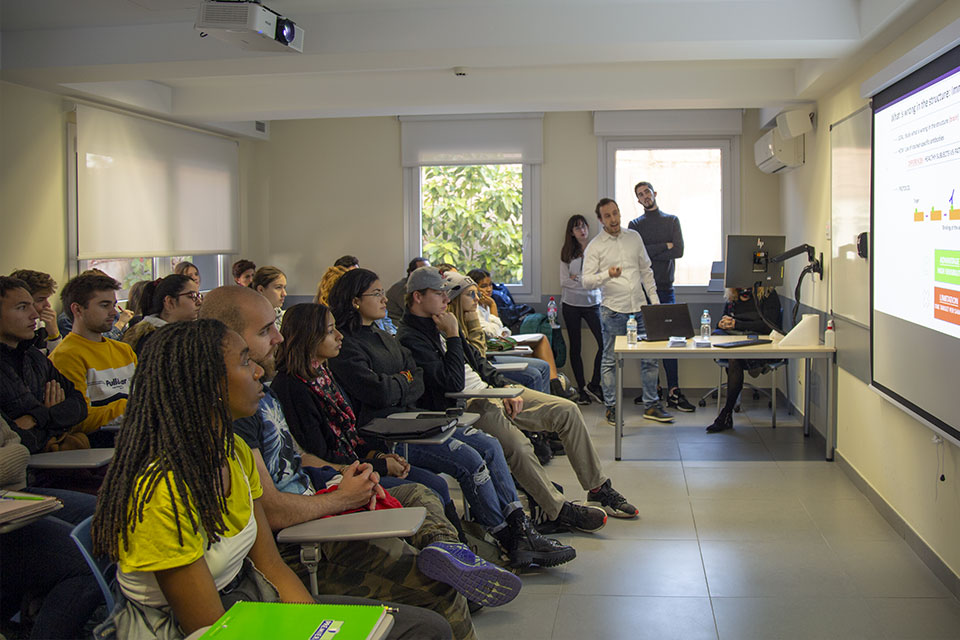Biomedical Researchers Present Their Latest Breakthroughs at SLU-Madrid
A team of biomedical researchers from the Thyroid and Nervous System Lab at the Instituto de Investigaciones Biomédicas Alberto Sols shared the latest advances in treatment options for Allan-Herndon-Dudley Syndrome with biology and chemistry students at SLU-Madrid.
Allan-Herndon-Dudley Syndrome is a rare disease caused by a mutation on a gene located on the X chromosome. This mutation produces an incorrect transport protein, which is needed in order for thyroid hormones to enter the brain. Without thyroid hormones in the brain, development is altered, resulting in severe intellectual disability and psychomotor problems. The team works directly with the six known cases of the disease in Spain, all of which affect male children.
The research team of four – Carmen Grijota, Víctor Valcárcel, Marina Guillén and Ángel García – presented their latest advances. Currently their research focuses on using analogues of thyroid hormones, that is, molecules with different chemical structure but similar effects, without needing a transport protein to get into the brain. They are also promoting for the inclusion of a test to diagnose this disease in the usual blood test done to newborns. Director of the Institute, Ana Guadaña, attended the presentation.
“It was a privilege to host such accomplished researchers on campus,” said biology professor María-José Morell. “For students in introductory classes, it is always eye-opening to see first-hand how the fundamentals of biology and chemistry are being applied to find real-world solutions and improve the lives of others. Of the students in attendance, several are considering careers in biomedical research and these encounters prove inspirational for them. We applaud the work being done by this team and thank them sincerely for taking the time to share their insight with us.”
